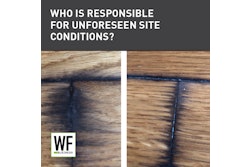
 Shutterstock.com | Ricardo Reitmeyer
Shutterstock.com | Ricardo ReitmeyerWhat happened would have been perfectly predictable had the pair realized that the ACA, also known as Obamacare, puts different requirements on companies based on the number of employees.
Understanding the key features of Obamacare and how they impact businesses of different sizes can help owners protect themselves from receiving costly fines in the future and can even lower healthcare costs.
Key Features of Obamacare
1) How ACA computes FTEs.
The impacts of Obamacare differ depending on the size of your small business. There are four size categories in Obamacare: self-employed, fewer than 25 employees, 25-50 employees and more than 50 employees.
The size of your small business is based on the number of "full-time equivalent employees," or FTEs. FTEs are calculated by adding the total number of full-time employees (those who work 30 hours per week or more), plus the total number of part-time employee hours divided by 30.
If your company has 20 FTEs that work 40 hours per week, plus another 10 part-time employees that work 20 hours per week, you would calculate your FTEs as follows:
20 FTEs + (200 part-time hours ÷ 30) = 26.66 FTEs. In this case, your business would fall in the 25-50 employee range.
However, seasonal employees, contractors and business owners do not count toward the FTE total. Part-time employee hours can be averaged from anywhere between a 3- and 12-month span to determine FTE.
2) SHOP Exchanges: The Small Business Health Options Program
The SHOP exchanges, or Small Business Health Options Programs, are marketplaces designed specifically for small businesses. As of Oct. 1, 2013, you can access the SHOP exchanges through your state's health insurance marketplace. The SHOP exchanges give small business employers greater purchasing power and allow them to choose from a wide variety of Qualified Health Plans (QHPs) that meet their budgets. As of 2014, the SHOP Marketplace is open to employers with 50 or fewer FTEs, and in 2016 will open to those with 100 or fewer FTEs.
The SHOP exchanges offer small business owners a number of benefits, such as the ability to control the coverage you offer and how much you pay toward employee premiums. They also enable small business owners to compare health plans online and qualify for small business healthcare tax credits. If you use the SHOP exchange, you must offer coverage to all of your full-time workers, and in most states, at least 70 percent of your employees must enroll in the SHOP exchange.
3) The Small Business Healthcare Tax Credit
The largest tax credits are available to small businesses with fewer than 25 FTEs. Currently, these businesses can apply for tax breaks of up to 35 percent of their contribution to employees' premiums. In 2014, the tax credit amount will increase to 50 percent for small businesses, and 35 percent for non-profits. In order to qualify, businesses must pay for at least 50 percent of their employees' premiums and their workers' average annual wages cannot be more than $50,000 a year.
In order to qualify for tax credits, insurance must be purchased on the Affordable Insurance Exchange for at least two years. The credits can be claimed on your income tax return with an attached Form 8941, which must show calculations for the credit.
Employers can also use the Early Retiree Reinsurance Program to access financial help for plans that provide health insurance to retirees ages 55-64. In order to gain a greater understanding of your potential healthcare tax credits, see the Small Business Health Care Credit Estimator available online at www.taxpayeradvocate.irs.gov/calculator/SBHCTC.htm.
4) The "Employer Mandate"
The "Employer Mandate" is a "shared responsibility" penalty fee for all employers with more than 50 FTEs that do not provide healthcare to their employees. This fee does not begin until 2015, and does not apply to small businesses with fewer than 50 FTEs.
For those small businesses with more than 50 FTEs, the penalty is $2,000 per employee, or $3,000 if employees purchase health insurance through the exchange with premium credits. However, the first 30 FTEs are exempt from this penalty. In other words, if your small business has 55 FTEs, you would only be liable for a penalty of 25 of those FTEs.
5) New Costs for Some Small Businesses
While Obamacare will reduce costs for the majority of small businesses, there are a few small cost increases to be aware of. First, there is a $63 pre-existing conditions fee, which employers can pass on to employees. Second, if your business makes more than $250,000 in taxable profit, you will have to pay a 0.9 percent increase on the current Medicare Part A tax. Small businesses making less than $250,000 in taxable profit are exempt from this Medicare tax increase.
Size-Based Mandates
Self-employed:
If you're self-employed, meaning you can get coverage through your state's Health Insurance Marketplace, you will not use the SHOP exchanges.
Fewer than 25 employees:
Small businesses with fewer than 25 employees receive the greatest benefits from Obamacare. Your business is exempt from the "Employer Mandate," and you can now purchase health insurance plans through the SHOP exchanges. If you purchase an insurance plan through the SHOP exchange, you may qualify for tax breaks of up to 35 percent of your contribution to employees' premiums. These tax credits will increase to 50 percent for small businesses in 2014. Employers with less than 25 full-time workers each making less than $50,000 a year may also be eligible for cost assistance via premium tax credits if they use the SHOP exchange.
25-50 employees:
Small business employers with 25-50 FTEs are exempt from the "Employer Mandate," but will not have access to the same tax credits as those small businesses with fewer than 25 employees.
More than 50 employees:
Small business employers with more than 50 FTEs can purchase health insurance through the SHOP exchanges, and are not exempt from the "Employer Mandate," which takes effect in 2015. Furthermore, your business will not have access to the same tax breaks as those small businesses with fewer than 25 employees.
Notify Employees
Be aware that if your business, no matter the number of employees, does $500,000 or more in annual dollar volume of business, you are required to notify your employees about the new Health Insurance Marketplace; inform them that they may be eligible for a premium tax credit if they purchase coverage through the Marketplace; and advise them that if they purchase a plan through the Marketplace, they may lose the employer contribution (if any) to any health benefits plan offered by the employer.
Though the size of the ACA may seem daunting, knowing a few key items-how many FTEs on staff, SHOP exchanges, etc.-will help your small business navigate the new employee healthcare environment as the cogs of Obamacare gradually start turning.
For more on small business owners options for providing health insurance see this article.
































